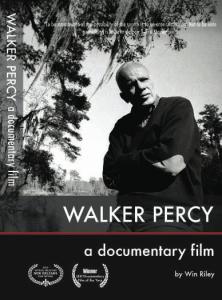Enrichment in such an age appears either as enrichment within immanence, i.e., the discriminating consumption of the goods and services of society, such as courses in personality enrichment, creative play, and self-growth through group interaction, etc.—or through the prime joys of the age, self-transcendence through science and art.
The pleasure of such transcendence derives not from the recovery of self but from the loss of self. Scientific and artistic transcendence is a partial recovery of Eden, the semiotic Eden, when the self explored the world through signs before falling into self-consciousness. Von Frisch with his bees, the Lascaux painter with his bison were as happy as Adam naming his animals.
00000
All at once, he saw how it all worked, saw the very mechanism of his sadness and therefore the means of rising above it. Above it he was and above all this, the people whom now he understood, the Indians, the tourists, even the scientist whom he knew by reputation. They, not he, were puppets worked by strings they could not see. But he knew, could see the strings and, best of all, work them himself—for the good of the Soviet Union and therefore for world peace.
00000
IN THE AGE OF science, scientists are the princes of the age. Artists are not. So that even though both scientists and artists achieve transcendence over the ordinary world in their science and art, only the scientist is sustained in his transcendence by the exaltation of the triumphant spirit of science and by the community of scientists.
It is perhaps no accident that at the high tide of physics in the nineteenth and early twentieth centuries, the great revolutionary physicists—e.g., Faraday, Maxwell, Bohr, Einstein—were also men of remarkable integrity and exultant wholeness of character, of generosity and benignity. Compare the lives and characters of the comparably great in literature at the same time: Dostoevsky, Baudelaire, Kafka, Joyce, Lawrence, Hemingway.
With the disappearance of the old cosmological myths and the decline of Judaeo-Christianity and the rise of the autonomous self, science and art, one the study of secondary causes, the other the ornamental handmaiden of rite and religion, were seized upon and elevated to royal highroads of transcendence in their own right. Such transcendence was available not only to the scientists and artists themselves but to a community of fellow scientists and students, and to the readers and listeners and viewers to whom the “statements” of art, music, and literature were addressed.

